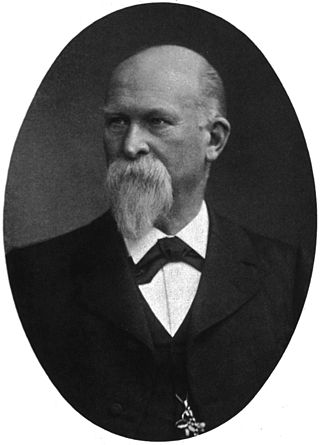Franz König (surgeon)
German surgeon (1832–1910) From Wikipedia, the free encyclopedia
Franz König (10 February 1832 – 12 December 1910) was a German surgeon. The son of a physician, he was born in Rotenburg an der Fulda.[1]


In 1855 he received his doctorate from the University of Marburg, and was later district wound surgeon (Amtswundarzt) in Hanau. Afterwards he was a professor of surgery at the universities of Rostock (from 1869) and Göttingen (from 1875), and eventually at the Charité-Berlin, where in 1895 he succeeded Heinrich Adolf von Bardeleben.[2] In 1904 he was succeeded at the Charité by Otto Hildebrand.[3]
He died in Grunewald near Berlin.
König is largely remembered for his work in bone and joint surgery. He was the first surgeon to perform a successful internal fixation of proximal femur fractures. In 1887, he published a paper on the cause of loose bodies in the joint. In his paper, König concluded:[4]
- That trauma had to be very severe to break off parts of the joint surface.
- That lesser degrees of trauma might contuse the bone to cause an area of necrosis which might then separate.
- That in some cases, the absence of trauma worth mentioning made it likely that there existed some spontaneous cause of separation.
König named the disease "osteochondritis dissecans",[5] describing it as a subchondral inflammatory process of the knee, resulting in a loose fragment of cartilage from the femoral condyle.
In 1892 he provided a comprehensive description of hemophilic arthropathy. He is credited for formulating three stages of hemophilic joint disease.[6][7]
Associated eponym
- König's syndrome: Various abdominal symptoms caused by an incomplete obstruction of the small intestine.
Notes
References
Wikiwand - on
Seamless Wikipedia browsing. On steroids.
